 Leaving Vanuatu was difficult even though both Benjamin and I were utterly exhausted by work and in dire need of a break. In many aspects I am not sure that it has really sunk in that we are not returning... I mean we have come to Thailand before and enjoyed cuisine that tasted very different than starch, coconuts and firewood and yet returned to our island home. So it will take a several months I believe before it sinks in that our adventures in Vanuatu are behind us and many other adventures lie ahead. One thing is for certain, leaving the quite small capital of Port Vila and landing, after 28 hours of flights and lay-overs, in Bangkok a city of 10 million people and a sensory overload of lights, sights, smells, colors and languages, is a bit shocking really.
Leaving Vanuatu was difficult even though both Benjamin and I were utterly exhausted by work and in dire need of a break. In many aspects I am not sure that it has really sunk in that we are not returning... I mean we have come to Thailand before and enjoyed cuisine that tasted very different than starch, coconuts and firewood and yet returned to our island home. So it will take a several months I believe before it sinks in that our adventures in Vanuatu are behind us and many other adventures lie ahead. One thing is for certain, leaving the quite small capital of Port Vila and landing, after 28 hours of flights and lay-overs, in Bangkok a city of 10 million people and a sensory overload of lights, sights, smells, colors and languages, is a bit shocking really.Ah, yes Bangkok. You can buy anything and everything in Bangkok. Benign and any sort of debauchery you like is all laid out in front of you for your bargaining pleasure. Many of the goods just leave me wondering, after having a bit of experience in manufacturing; Did someone really  create a mold or fitting to create that? Who is the poor soul that sets in a factory all day and creates these smiling, ceramic and rhythmically waving cats? Coming from our small and rather socialistic South Pacific home I find it hard to look around and see the huge disparity between the Thai and I find it rather hard to witness the homelessness, poverty, hunger and begging women and children that were absent in Vanuatu. It seems to me that Bangkok is a concrete jungle, a complex maize of facades built one in front of the other. Unlike many countries, such as our own, Thailand makes no effort to cover up the disparity, the old or unpleasant facades and they exist side by side with the new, glamorous, high technology and consumer driven facades that the upper-class Thai enjoy. Case in point was the small toddler we past on the "sky deck walkway" walking from one designer mega-mall to the next. There was a row of street beggars only 20 yards from the entrance and the last one was a 2-3 year old sitting by himself, no shoes, no shirt, repetitively and almost trance-like performing the wai (hands in prayer-like gesture) and bowing over a small cup of change. Only 20 yards away were the marble-clad corridors full of Thai people purchasing Prada and the like. A security guard also stood by the door, in full view of the street peddlers and beggars... no attempt was made to relocate the powerful illustration of social class here in Thailand.
create a mold or fitting to create that? Who is the poor soul that sets in a factory all day and creates these smiling, ceramic and rhythmically waving cats? Coming from our small and rather socialistic South Pacific home I find it hard to look around and see the huge disparity between the Thai and I find it rather hard to witness the homelessness, poverty, hunger and begging women and children that were absent in Vanuatu. It seems to me that Bangkok is a concrete jungle, a complex maize of facades built one in front of the other. Unlike many countries, such as our own, Thailand makes no effort to cover up the disparity, the old or unpleasant facades and they exist side by side with the new, glamorous, high technology and consumer driven facades that the upper-class Thai enjoy. Case in point was the small toddler we past on the "sky deck walkway" walking from one designer mega-mall to the next. There was a row of street beggars only 20 yards from the entrance and the last one was a 2-3 year old sitting by himself, no shoes, no shirt, repetitively and almost trance-like performing the wai (hands in prayer-like gesture) and bowing over a small cup of change. Only 20 yards away were the marble-clad corridors full of Thai people purchasing Prada and the like. A security guard also stood by the door, in full view of the street peddlers and beggars... no attempt was made to relocate the powerful illustration of social class here in Thailand.
 create a mold or fitting to create that? Who is the poor soul that sets in a factory all day and creates these smiling, ceramic and rhythmically waving cats? Coming from our small and rather socialistic South Pacific home I find it hard to look around and see the huge disparity between the Thai and I find it rather hard to witness the homelessness, poverty, hunger and begging women and children that were absent in Vanuatu. It seems to me that Bangkok is a concrete jungle, a complex maize of facades built one in front of the other. Unlike many countries, such as our own, Thailand makes no effort to cover up the disparity, the old or unpleasant facades and they exist side by side with the new, glamorous, high technology and consumer driven facades that the upper-class Thai enjoy. Case in point was the small toddler we past on the "sky deck walkway" walking from one designer mega-mall to the next. There was a row of street beggars only 20 yards from the entrance and the last one was a 2-3 year old sitting by himself, no shoes, no shirt, repetitively and almost trance-like performing the wai (hands in prayer-like gesture) and bowing over a small cup of change. Only 20 yards away were the marble-clad corridors full of Thai people purchasing Prada and the like. A security guard also stood by the door, in full view of the street peddlers and beggars... no attempt was made to relocate the powerful illustration of social class here in Thailand.
create a mold or fitting to create that? Who is the poor soul that sets in a factory all day and creates these smiling, ceramic and rhythmically waving cats? Coming from our small and rather socialistic South Pacific home I find it hard to look around and see the huge disparity between the Thai and I find it rather hard to witness the homelessness, poverty, hunger and begging women and children that were absent in Vanuatu. It seems to me that Bangkok is a concrete jungle, a complex maize of facades built one in front of the other. Unlike many countries, such as our own, Thailand makes no effort to cover up the disparity, the old or unpleasant facades and they exist side by side with the new, glamorous, high technology and consumer driven facades that the upper-class Thai enjoy. Case in point was the small toddler we past on the "sky deck walkway" walking from one designer mega-mall to the next. There was a row of street beggars only 20 yards from the entrance and the last one was a 2-3 year old sitting by himself, no shoes, no shirt, repetitively and almost trance-like performing the wai (hands in prayer-like gesture) and bowing over a small cup of change. Only 20 yards away were the marble-clad corridors full of Thai people purchasing Prada and the like. A security guard also stood by the door, in full view of the street peddlers and beggars... no attempt was made to relocate the powerful illustration of social class here in Thailand. There is one thing to be said about Bangkok and that is they have plenty of coffee-houses much to the delight of two Kahlers very sick of being served instant Nes-cafe for two dollars a cup in Vanuatu. Shaming enough Ben and I were "those Americans" for a few days, dabbling into a bit of McDonald's, Starbucks, Pizza Hut, Subway and Dunkin Donuts. The only excuse I have is that it had been nearly a year since we had any heart clogging, preservative ridden and entirely inorganic Americana. We have since settled into a bit of a quasi-local-American cuisine... a bit of Pad Thai and a Coke.. that sort of thing. Local whiskey (I think) and 7-up... everyone has to have a vice.
There is one thing to be said about Bangkok and that is they have plenty of coffee-houses much to the delight of two Kahlers very sick of being served instant Nes-cafe for two dollars a cup in Vanuatu. Shaming enough Ben and I were "those Americans" for a few days, dabbling into a bit of McDonald's, Starbucks, Pizza Hut, Subway and Dunkin Donuts. The only excuse I have is that it had been nearly a year since we had any heart clogging, preservative ridden and entirely inorganic Americana. We have since settled into a bit of a quasi-local-American cuisine... a bit of Pad Thai and a Coke.. that sort of thing. Local whiskey (I think) and 7-up... everyone has to have a vice. The noise, commotion, smog and cost of the capital city caused us to seek refuge in a smaller town. So Saturday we headed for Kanchanaburi, a "small" town of around 60,000 plus people, and home to the  historical Bridge over the River Kwai. The bridge was completed as part of the infamous Death Railway to Burma during the second world war by the Japanese Army during their occupation of Thailand in 1942-43. The Japanese used POWs and labourers from Thailand, Myanmar, Malaysia and Indonesia to construct not only the bridge but nearly 415 km of railway to link Myanmar (Burma) to Thailand... a road to further imperial conquest. The labor which was estimated to take nearly 5 years by Japanese engineers was forced to completion in just 16 months at a great cost in lives; 16,000 prisoners of war and between 90,000-100,000 laborers. Only 20 months later the Allied forces bombed the bridge in 1945 and only fractions of the original steel bridge remain. Today the railway, although almost all the original work has been replaced, is still operational. Today it is also crawling with tourist. Oddly enough the Japanese flag is always hung prominently in the middle of many flags representing the war at the various museums and roadside stands... and they also have several memorials constructed by the Japanese... although who they are commemorating was a bit unsure.
historical Bridge over the River Kwai. The bridge was completed as part of the infamous Death Railway to Burma during the second world war by the Japanese Army during their occupation of Thailand in 1942-43. The Japanese used POWs and labourers from Thailand, Myanmar, Malaysia and Indonesia to construct not only the bridge but nearly 415 km of railway to link Myanmar (Burma) to Thailand... a road to further imperial conquest. The labor which was estimated to take nearly 5 years by Japanese engineers was forced to completion in just 16 months at a great cost in lives; 16,000 prisoners of war and between 90,000-100,000 laborers. Only 20 months later the Allied forces bombed the bridge in 1945 and only fractions of the original steel bridge remain. Today the railway, although almost all the original work has been replaced, is still operational. Today it is also crawling with tourist. Oddly enough the Japanese flag is always hung prominently in the middle of many flags representing the war at the various museums and roadside stands... and they also have several memorials constructed by the Japanese... although who they are commemorating was a bit unsure.
 historical Bridge over the River Kwai. The bridge was completed as part of the infamous Death Railway to Burma during the second world war by the Japanese Army during their occupation of Thailand in 1942-43. The Japanese used POWs and labourers from Thailand, Myanmar, Malaysia and Indonesia to construct not only the bridge but nearly 415 km of railway to link Myanmar (Burma) to Thailand... a road to further imperial conquest. The labor which was estimated to take nearly 5 years by Japanese engineers was forced to completion in just 16 months at a great cost in lives; 16,000 prisoners of war and between 90,000-100,000 laborers. Only 20 months later the Allied forces bombed the bridge in 1945 and only fractions of the original steel bridge remain. Today the railway, although almost all the original work has been replaced, is still operational. Today it is also crawling with tourist. Oddly enough the Japanese flag is always hung prominently in the middle of many flags representing the war at the various museums and roadside stands... and they also have several memorials constructed by the Japanese... although who they are commemorating was a bit unsure.
historical Bridge over the River Kwai. The bridge was completed as part of the infamous Death Railway to Burma during the second world war by the Japanese Army during their occupation of Thailand in 1942-43. The Japanese used POWs and labourers from Thailand, Myanmar, Malaysia and Indonesia to construct not only the bridge but nearly 415 km of railway to link Myanmar (Burma) to Thailand... a road to further imperial conquest. The labor which was estimated to take nearly 5 years by Japanese engineers was forced to completion in just 16 months at a great cost in lives; 16,000 prisoners of war and between 90,000-100,000 laborers. Only 20 months later the Allied forces bombed the bridge in 1945 and only fractions of the original steel bridge remain. Today the railway, although almost all the original work has been replaced, is still operational. Today it is also crawling with tourist. Oddly enough the Japanese flag is always hung prominently in the middle of many flags representing the war at the various museums and roadside stands... and they also have several memorials constructed by the Japanese... although who they are commemorating was a bit unsure.Kanchanabari is a beautiful area and home to once mighty rain forest. It is hard to imagine what the POWs and labourers would have faced in light of the modern- and certainly more anthropogenic landscape found here today. Now most of the wildlife seems to be controlled and contained performing for tourist and Thai alike. At our guest house their are no fewer than three advertisements that would cause eco-friendly tourist to raise their eyebrows: a "tiger temple" complete with chained magnificent giants for your petting pleasure, a "monkey school" in which you can watch the trained monkeys perform human antics and the ever popular elephant ride through the forest. The first two are completely out of the question for yours truly and the third should only be done with the most reputable and conservation minded tour operators.
the POWs and labourers would have faced in light of the modern- and certainly more anthropogenic landscape found here today. Now most of the wildlife seems to be controlled and contained performing for tourist and Thai alike. At our guest house their are no fewer than three advertisements that would cause eco-friendly tourist to raise their eyebrows: a "tiger temple" complete with chained magnificent giants for your petting pleasure, a "monkey school" in which you can watch the trained monkeys perform human antics and the ever popular elephant ride through the forest. The first two are completely out of the question for yours truly and the third should only be done with the most reputable and conservation minded tour operators.
 the POWs and labourers would have faced in light of the modern- and certainly more anthropogenic landscape found here today. Now most of the wildlife seems to be controlled and contained performing for tourist and Thai alike. At our guest house their are no fewer than three advertisements that would cause eco-friendly tourist to raise their eyebrows: a "tiger temple" complete with chained magnificent giants for your petting pleasure, a "monkey school" in which you can watch the trained monkeys perform human antics and the ever popular elephant ride through the forest. The first two are completely out of the question for yours truly and the third should only be done with the most reputable and conservation minded tour operators.
the POWs and labourers would have faced in light of the modern- and certainly more anthropogenic landscape found here today. Now most of the wildlife seems to be controlled and contained performing for tourist and Thai alike. At our guest house their are no fewer than three advertisements that would cause eco-friendly tourist to raise their eyebrows: a "tiger temple" complete with chained magnificent giants for your petting pleasure, a "monkey school" in which you can watch the trained monkeys perform human antics and the ever popular elephant ride through the forest. The first two are completely out of the question for yours truly and the third should only be done with the most reputable and conservation minded tour operators.Considering what an icon the elephant is here in Thailand and the posh and gentle treatment received by most house pets, it is disturbing to see what these magnificent creatures face today. I guess like many other "unemployed" Thai the change in work brought about vast changes in lifestyle as well. Historically the Thai have used elephants  extensively in agriculture, particularly forestry and even battle. However in the 1990's forestry was banned in the Kingdom of Thailand and many elephants and their human caretakers or "mahouts" were left unemployed. They turned to tourism to regain a living and a salary. However, tourism can is a tricky business and local people and elephants alike may either benefit or be exploited by this temperamental industry. The problem is that tourism depends heavily on responsible and conscious consumers that insist on high standards of humane and fair treatment of both humans involved and their animal counterparts. As Ben and I crossed the Bridge over the River Kwai we saw both examples of Thai humanity and kindness towards animals and their exploitation. A young elephant was chained near a group of stalls, swaying rhythmically, stereotypically and simultaneously pulling at the source of his confinement. Ben and I observed him for sometime, imagining how the Kanchanaburi forest before would have supported this intelligent and sentient creatures unchained wanderings. It was depressing and as we turned to leave we see a Thai women in the River Kwai gently and yet vigorously washing her plump dog as a parent would wash their child. The dog wasn't resisting much as it seemed this was probably not an uncommon ritual. Coming from Vanuatu, in which the washing of any animal draws a crowd of snickering locals, the humane treatment of particularly cats and dogs is a welcome relief.
extensively in agriculture, particularly forestry and even battle. However in the 1990's forestry was banned in the Kingdom of Thailand and many elephants and their human caretakers or "mahouts" were left unemployed. They turned to tourism to regain a living and a salary. However, tourism can is a tricky business and local people and elephants alike may either benefit or be exploited by this temperamental industry. The problem is that tourism depends heavily on responsible and conscious consumers that insist on high standards of humane and fair treatment of both humans involved and their animal counterparts. As Ben and I crossed the Bridge over the River Kwai we saw both examples of Thai humanity and kindness towards animals and their exploitation. A young elephant was chained near a group of stalls, swaying rhythmically, stereotypically and simultaneously pulling at the source of his confinement. Ben and I observed him for sometime, imagining how the Kanchanaburi forest before would have supported this intelligent and sentient creatures unchained wanderings. It was depressing and as we turned to leave we see a Thai women in the River Kwai gently and yet vigorously washing her plump dog as a parent would wash their child. The dog wasn't resisting much as it seemed this was probably not an uncommon ritual. Coming from Vanuatu, in which the washing of any animal draws a crowd of snickering locals, the humane treatment of particularly cats and dogs is a welcome relief.
 extensively in agriculture, particularly forestry and even battle. However in the 1990's forestry was banned in the Kingdom of Thailand and many elephants and their human caretakers or "mahouts" were left unemployed. They turned to tourism to regain a living and a salary. However, tourism can is a tricky business and local people and elephants alike may either benefit or be exploited by this temperamental industry. The problem is that tourism depends heavily on responsible and conscious consumers that insist on high standards of humane and fair treatment of both humans involved and their animal counterparts. As Ben and I crossed the Bridge over the River Kwai we saw both examples of Thai humanity and kindness towards animals and their exploitation. A young elephant was chained near a group of stalls, swaying rhythmically, stereotypically and simultaneously pulling at the source of his confinement. Ben and I observed him for sometime, imagining how the Kanchanaburi forest before would have supported this intelligent and sentient creatures unchained wanderings. It was depressing and as we turned to leave we see a Thai women in the River Kwai gently and yet vigorously washing her plump dog as a parent would wash their child. The dog wasn't resisting much as it seemed this was probably not an uncommon ritual. Coming from Vanuatu, in which the washing of any animal draws a crowd of snickering locals, the humane treatment of particularly cats and dogs is a welcome relief.
extensively in agriculture, particularly forestry and even battle. However in the 1990's forestry was banned in the Kingdom of Thailand and many elephants and their human caretakers or "mahouts" were left unemployed. They turned to tourism to regain a living and a salary. However, tourism can is a tricky business and local people and elephants alike may either benefit or be exploited by this temperamental industry. The problem is that tourism depends heavily on responsible and conscious consumers that insist on high standards of humane and fair treatment of both humans involved and their animal counterparts. As Ben and I crossed the Bridge over the River Kwai we saw both examples of Thai humanity and kindness towards animals and their exploitation. A young elephant was chained near a group of stalls, swaying rhythmically, stereotypically and simultaneously pulling at the source of his confinement. Ben and I observed him for sometime, imagining how the Kanchanaburi forest before would have supported this intelligent and sentient creatures unchained wanderings. It was depressing and as we turned to leave we see a Thai women in the River Kwai gently and yet vigorously washing her plump dog as a parent would wash their child. The dog wasn't resisting much as it seemed this was probably not an uncommon ritual. Coming from Vanuatu, in which the washing of any animal draws a crowd of snickering locals, the humane treatment of particularly cats and dogs is a welcome relief. 
It is hard to watch the sufferings of any being, human or otherwise. Many of the hardships and misgivings I may have about the situations found here in Thailand must also be viewed through diverse cultural glasses. The answers are not well defined or clear-cut. Tourism will not stop here in Thailand or elsewhere no matter the consequences for the environment or culture that draws people near. You can only support the most sustainable and humane options available and encourage others to do the same. One thing is for sure it is hard not to feel alive in this diverse landscape with the all the success and failures, the humanity and cruelty and the almost palatable optimism in Thailand's future.
-Jessica
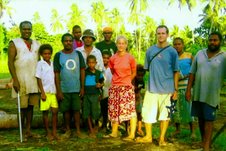
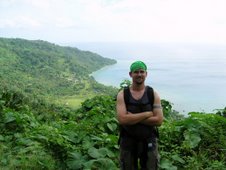
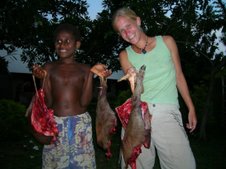
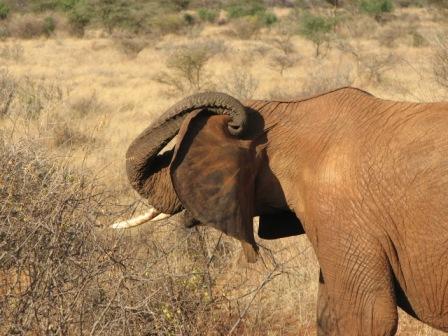
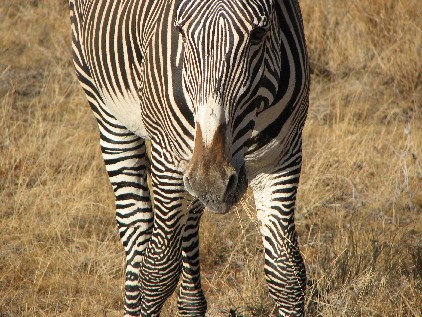
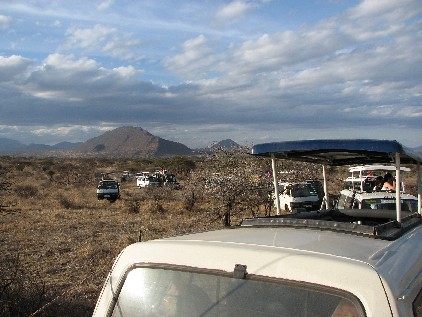

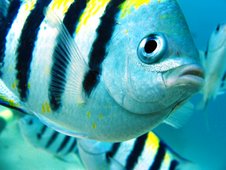
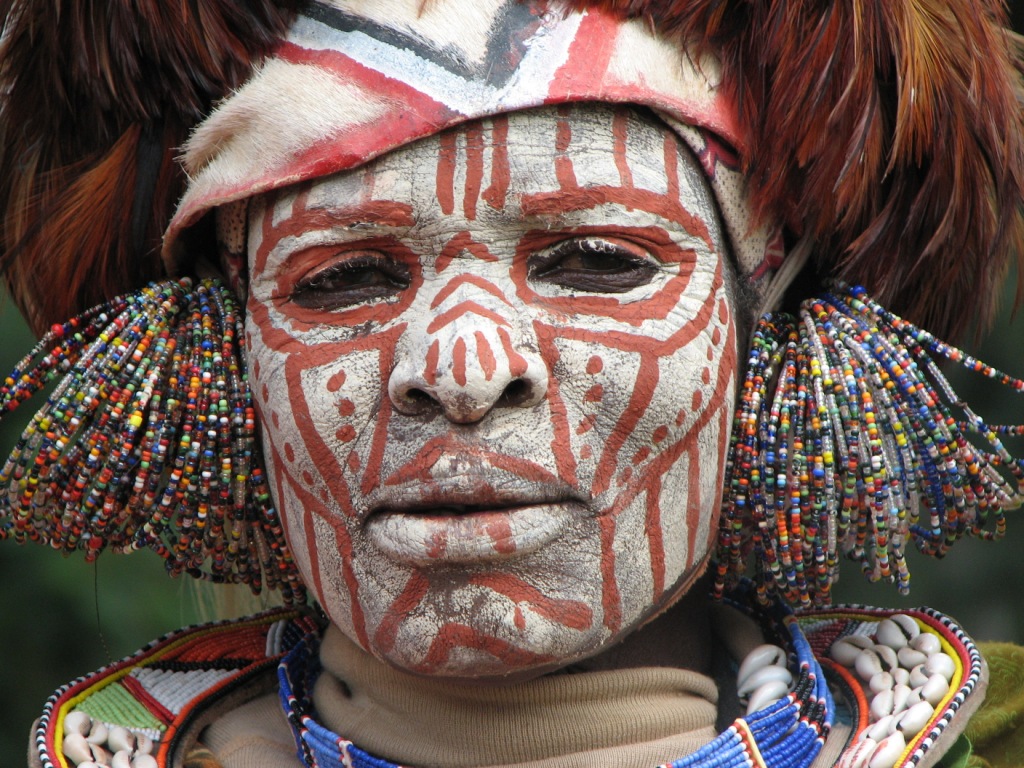
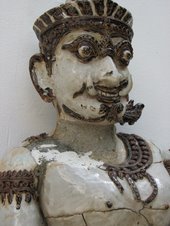

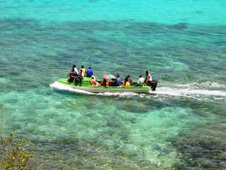
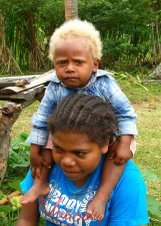
No comments:
Post a Comment